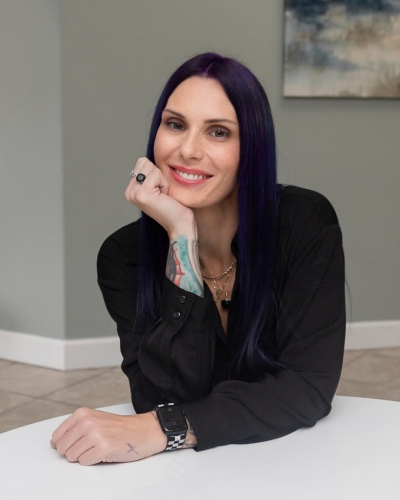Whether you’re navigating anxiety, depression, or the challenges of everyday stress, finding the right therapeutic approach can be a game-changer in your journey toward mental wellness. With so many types of mental therapies available, it’s essential to understand which one might best suit your needs.
1. Cognitive Behavioral Therapy (CBT)
Cognitive Behavioral Therapy (CBT) is a widely recognized and evidence-based form of psychotherapy that focuses on identifying and changing negative thought patterns and behaviors. CBT is grounded in the idea that our thoughts, feelings, and behaviors are interconnected and that altering one can lead to changes in the others.
Benefits:
- Proven effectiveness for a variety of mental health issues, including depression, anxiety, and PTSD.
- Short-term and goal-oriented, often leading to improvements within a few sessions.
- Empower individuals with practical tools to manage their symptoms.
Common Uses:
CBT is commonly used to treat anxiety disorders, depression, phobias, and obsessive-compulsive disorder (OCD). It’s also effective in managing stress, anger, and relationship problems.
2. Dialectical Behavioral Therapy (DBT)
Dialectical Behavior Therapy (DBT) is a specialized form of CBT originally developed to treat borderline personality disorder. DBT focuses on teaching individuals skills in four key areas: mindfulness, distress tolerance, emotion regulation, and interpersonal effectiveness.
Benefits:
- Helps individuals manage intense emotions and reduce self-destructive behaviors.
- Emphasizes acceptance and change, providing a balanced approach to therapy.
- Incorporates both individual therapy sessions and group skills training.
Common Uses:
DBT is particularly effective for treating borderline personality disorder, but it’s also used to help those with eating disorders, severe depression, PTSD, and substance abuse issues.
3. Psychodynamic Therapy
Psychodynamic Therapy is a deep, insight-oriented therapy that focuses on understanding the unconscious processes that influence behavior. It often involves exploring past experiences, particularly childhood, to understand how they shape current behaviors and relationships.
Benefits:
- Provides deep insights into emotional issues and patterns that may be rooted in the past.
- Aims to help individuals gain self-awareness and understand the underlying causes of their symptoms.
- Can lead to long-lasting change by addressing the root causes of emotional distress.
Common Uses:
Psychodynamic therapy is often used to treat depression, anxiety, and personality disorders. It’s also effective for individuals dealing with unresolved trauma or chronic relationship issues.
4. Humanistic Therapy
Humanistic Therapy is a client-centered approach that emphasizes the individual’s self-awareness and personal growth capacity. This therapy focuses on the present moment and encourages individuals to explore their feelings and take responsibility for their thoughts and actions.
Benefits:
- Encourages self-exploration and personal growth.
- Fosters a non-judgmental and supportive environment where clients feel heard and understood.
- Helps individuals achieve their full potential by focusing on strengths rather than weaknesses.
Common Uses:
Humanistic therapy is beneficial for those dealing with low self-esteem, anxiety, depression, and relationship issues. It’s also used in personal development and self-actualization efforts.
5. Art Therapy
Art Therapy is a creative therapeutic approach that uses art as a means of expression and communication. It is particularly useful for individuals who struggle to express their thoughts and emotions through words alone. Through drawing, painting, sculpture, or other art forms, clients can explore their feelings and experiences in a non-verbal way.
Benefits:
- Provides a safe and creative outlet for expressing complex emotions.
- Can be particularly effective for children, adolescents, and individuals with trauma.
- Encourages self-expression and can lead to deeper insights into one’s mental health.
Common Uses:
Art therapy is often used to help individuals with trauma, depression, anxiety, and chronic illness. It’s also effective in enhancing the emotional well-being of children and those with developmental disorders.
6. Family Therapy
Family Therapy is a form of psychotherapy that involves family members in treatment sessions. The goal is to improve communication, resolve conflicts, and foster a healthier family dynamic. Family therapy recognizes that individual issues often affect the entire family and that addressing these issues within the context of family relationships can be particularly effective.
Benefits:
- Strengthens relationships by improving communication and understanding among family members.
- Addresses specific issues such as parenting challenges, family conflicts, or the impact of mental illness on the family unit.
- Helps families develop healthy coping strategies and problem-solving skills.
Common Uses:
Family therapy is often used in cases of substance abuse, depression, eating disorders, and behavioral problems in children and adolescents. It’s also effective in navigating major life transitions like divorce or losing a family member.
7. Group Therapy
Group Therapy involves one or more therapists working with several people at the same time. It is an effective way for individuals to receive support and encouragement from others facing similar challenges. By allowing members to share their experiences and learn from each other, group therapy can provide a sense of community and reduce feelings of isolation.
Benefits:
- Provides a supportive environment where individuals can share experiences and coping strategies.
- Offers diverse perspectives as members learn from the insights and experiences of others.
- Enhances social skills and provides a sense of belonging.
Common Uses:
Group therapy is commonly used for substance abuse recovery, eating disorders, grief, and chronic illness. It’s also effective for individuals dealing with depression, anxiety, and trauma.
8. Mindfulness-Based Therapy
Mindfulness-based therapy incorporates mindfulness practices, such as meditation and breathing exercises, into the therapeutic process. The goal is to help individuals become more aware of their thoughts and feelings in the present moment without judgment. This awareness can reduce stress and improve emotional regulation.
Benefits:
- Promotes relaxation and reduces stress by encouraging present-moment awareness.
- Helps individuals develop a non-judgmental attitude toward their thoughts and emotions.
- Can be integrated with other therapeutic approaches for enhanced effectiveness.
Common Uses:
Mindfulness-based therapy is particularly effective for managing stress, anxiety, depression, and chronic pain. It’s also used to help individuals with trauma, eating disorders, and substance abuse issues.
9. Interpersonal Therapy (IPT)
Interpersonal Therapy (IPT) is a time-limited therapy focused on improving interpersonal relationships and social functioning to reduce distress. IPT is based on the idea that improving communication patterns and resolving conflicts in current relationships can lead to a significant reduction in symptoms of depression and other mood disorders.
Benefits:
- Focuses on current relationships and social interactions, making it highly practical and applicable.
- Time-limited, with a structured approach typically lasting 12-16 weeks.
- Effective in improving communication skills and reducing symptoms of depression.
Common Uses:
IPT is most commonly used to treat depression, but it’s also effective for bipolar disorder, postpartum depression, and anxiety disorders. It can help individuals improve their relationships and cope with life transitions.
10. Holistic or Integrative Therapy
Holistic or Integrative Therapy is an approach that combines traditional psychotherapy with complementary therapies, such as yoga, acupuncture, or nutritional counseling. This approach addresses the individual, considering the physical, mental, emotional, and spiritual aspects of well-being.
Benefits:
- Offers a comprehensive approach to treatment by addressing multiple aspects of an individual’s well-being.
- Can be tailored to the specific needs and preferences of the individual.
- Enhances traditional therapy with additional supportive practices.
Common Uses:
Holistic therapy is often used to treat anxiety, depression, chronic pain, and stress-related conditions. It’s also beneficial for individuals seeking a more natural or integrative approach to mental health.
How to Choose the Right Therapy for You
Selecting the right type of therapy can feel overwhelming, especially with so many options available. However, finding the best fit is crucial for effective treatment and long-term mental wellness. Here’s how you can navigate the process:
- Understand Your Challenges: Begin by reflecting on the specific issues you’re facing. Are you dealing with anxiety, depression, relationship problems, or past trauma? Knowing the primary challenge you want to address can guide you toward the most suitable therapy.
- Therapy Style: Consider whether you prefer a structured approach like CBT, which focuses on changing specific behaviors, or a more exploratory approach like psychodynamic therapy, which delves into past experiences and underlying issues.
- Session Format: Decide if you’re more comfortable in one-on-one sessions or if you would benefit from the support and shared experiences found in group therapy. Family therapy might be the best option if family dynamics are a significant concern.
It’s okay to try a type of therapy and realize it’s not the best fit. Therapy is a personal journey; sometimes, finding the right match takes a few tries. Be open to adjusting your approach as you learn more about what works for you.
If you’re ready to start your journey or need guidance in choosing the right therapy, don’t hesitate to reach out to a mental health professional. At Onyx Behavioral Health, we’re here to help you explore your options and find the support you need.





 Michaela Welk, LMHC
Michaela Welk, LMHC Bunny Berman
Bunny Berman Tank
Tank Richard E. LoSardo, MD
Richard E. LoSardo, MD Christopher Payne
Christopher Payne Bernard Benjamin
Bernard Benjamin Tiffany Bellino
Tiffany Bellino